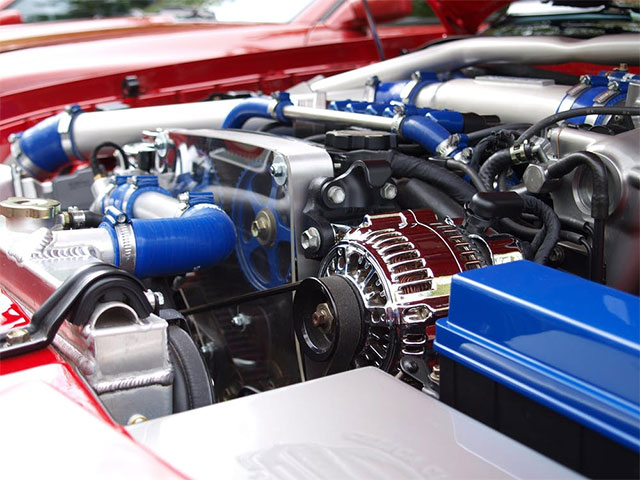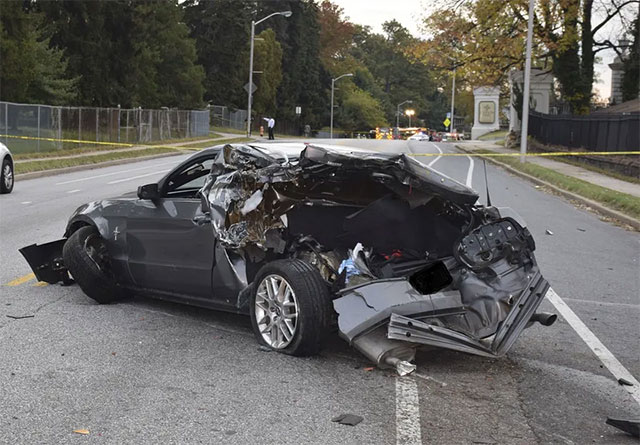Are you experiencing engine sputtering, poor performance, low gas mileage, or rough idling? It could either be a classic case of Mondays or, most probably, bad fuel injectors. Locating the bad fuel injector symptoms and investing in cleaning or replacing the injectors will assist you in smoothing out the bumpy ride and enjoying a carefree journey.
Table of Contents
Top Bad Fuel Injector Symptoms
Today, we aim to provide a comprehensive overview of the bad fuel injector symptoms and their possible solutions. Before we discuss these details, let’s examine how fuel injectors work.

What is A Fuel Injector, And How does it Works?
As the name implies, a fuel injector is a device that injects fuel into the engine. It rests inside a valve body comprising a magnet winding and a nozzle needle.
- The process starts with the fuel pump that sends gasoline to the injector.
- The injector spreads fuel into the intake manifold in the right amount and at a precise angle and pressure.
- The air and fuel mix in the intake manifold.
- After the compression of this mixture, a chemical reaction occurs that powers the mill.
Any error in fuel delivery can cause serious issues or even complete failure. The Engine Control Unit (ECU) analyzes and manages electrical impulses that activate or deactivate the injectors according to the driver’s requirements. The injectors open for a certain period according to the driver’s input.
What are the symptoms of a bad fuel injector?
One or more malfunctioning fuel injectors will prevent your vehicle’s engine from functioning properly. A fuel injector malfunctions by preventing fuel from reaching the engine or messing up its spray intervals. In both cases, your vehicle will not run as smoothly as it should. It is essential to consider several factors when deciding whether only to clean or replace your fuel injector.
Below we have discussed ten bad fuel injector symptoms.
1. Blinking Engine Light
Your dashboard may display a blinking check engine light as one of the apparent symptoms of a malfunctioning engine. There could be many other causes why the check engine light may illuminate. The best way to find if it is a bad fuel injector symptom, use an OBD2 reader. The injectors could be the culprit if you get the P0201 code or other related codes. The CEL usually comes on when injectors feed less fuel than required.
2. Engine Starts Vibrating
Engine vibration is also a common Ford F150 problem. It is normal for an engine to start vibrating after finishing the complete cycle with too little fuel. Clogged fuel injectors in turbocharged engines can cause disastrous detonations and damage to the motor.
Turbocharged engines consume a large amount of fuel when operating at high RPMs. When the fuel injectors are not able to handle this, an explosion inside the powerplant may cause it to shake.
3. Misfires Occur in the Engine.
Your vehicle’s engine may misfire due to dirty fuel injectors or when it fails to open appropriately. It will result in reduced acceleration, minimized fuel efficiency, and loss of power.
You need to handle this issue immediately, or the motor may overheat or start knocking and cause severe damage.
4. Fuel Starts Giving Off Bad Odor
A leaking and malfunctioning injector will give a foul smell due to excess sprayed fuel. You may smell the fuel from the exhaust pipe or the engine bay. Both these issues can be fatal, as the vehicle can catch fire easily.
5. Your Car Won’t Start.
It is the fuel injector’s duty to deliver fuel to the appropriate cylinders. If it doesn’t happen, your engine will not receive the correct combination of air and fuel required to function correctly. With an unbalanced air-to-fuel ratio, it may be impossible to generate the proper combustion for its operation.
Occasionally, fuel injector problems may prevent your vehicle from starting because of engine failure.
6. A Higher Fuel Consumption Rate
Regular fuel consumption monitoring will reveal whether fuel efficiency falls or improves due to a bad injector. A malfunctioning injector may deliver excess or insufficient fuel to the engine. When the engine demands more fuel than required, the fuel consumption increases.
7. Failed Emission Test
A broken or leaking fuel injector can cause an uneven or incomplete fuel burn, resulting in increased emissions. Consequently, you are much more likely to fail an emission test.
A fuel injector leak can sometimes lead to a very excessive air/fuel mixture and may cause the burning of the catalytic converter.
8. Idling Becomes Unmanageable
A vehicle sputter or a shake at a stop is one of the bad fuel injector symptoms. We call it “rough idling,” and it occurs when we experience inconsistent revolutions per minute (RPMs), even if we are not pushing the pedal. The idling may cause engine stalling as we feel an unexpected decline in RPMs and motor noise.
It can happen when there is a lean or rich mixture within the fuel injector, causing the engine to misfire and stall.
9. Fuel Leakage
It is one of the obvious bad fuel injector symptoms. Fuel injectors leak gasoline when they get cracked, usually due to age or damage. When it happens, fuel leaks out of the valve body instead of going to the nozzle.
In the event that a fuel injector malfunctions, you will see gasoline around the fuel injector or near the fuel rail. Usually, the injector seal leaks due to deterioration.
10. The Engine Does Not Attain its Maximum RPM.
You normally control the dash gauges on your vehicle. As you drive more, the gas needle shifts from “F” to “E.” On the other hand, when you accelerate, the speedometer needle goes from “0” to “100.”
A dancing RMP needle is a dirty fuel injectors sign. The RMP needle moves randomly even if you are not changing gears.
How to Fix Faulty Fuel Injectors?
Now you know the bad fuel injectors symptoms, let’s find out how to fix them.
1. Make an Appointment With a Mechanic
A mechanic is your best option to diagnose bad fuel injector symptoms if you are not good with tools. Having an injector (and an engine) repaired can be expensive and complicated, so better consult an expert.
2. Connect an OBD Code Reader to Your Vehicle
OBD Readers provide you with information on whether the Engine Control Unit (ECU) recorded any errors or not. Identifying bad fuel injector symptoms through an error code is possible.
If you utilize a generic code reader, you might see codes beginning with P02. When there is an issue with one of the injectors in cylinder one, you receive a P0201 code. You may also receive other error codes, such as P0101, P0300, or P0299. Only an expert mechanic would know the meaning of each error code.
3. Examine the Engine Compartment Visually
When you open the hood, a leaky injector will cause a strong fuel smell. Remove each injector for inspection if you cannot spot the issue with error codes. Only an expert familiar with fuel injector issues can offer a solution.
4. Take Out All Injectors and Test Them
Checking the ECU for error codes is the easiest way to diagnose a broken injector. When an injector breaks, it can lead to a misfire in the engine, causing an error code to appear. It is a good idea to have all the injectors checked by a mechanic, even if the code reader says only one is malfunctioning.
5. Use a Fuel Injector Cleaning Kit
You can find various injector cleaning kits online and at brick-and-mortar hardware stores. Using them could be more efficient than performing the task yourself. But, ensure to follow the correct procedure. Here is a brief overview of the cleaning process:
- Make sure the cleaning solvent you choose is compatible with your vehicle.
- Attach the cleaning kit to the fuel port of your engine. Consult your manual if you’re not sure where it is.
- Remove the fuel pump from your engine physically to disable it.
- Disengage the fuel pressure regulator.
- Adjust the compressed air pressure according to the cleaning kit levels.
- The cleaning kit will absorb all the cleaning solvent once your vehicle starts.
- Following the detachment of the kit, it is crucial to connect the fuel pump and pressure regulator.
Conclusion
If you are experiencing any of the bad fuel injector symptoms mentioned above, it is crucial to take your car in for service as soon as possible. Faulty fuel injectors can lead to decreased fuel economy and low performance and even cause your engine to stall.
You can clean or replace the faulty injectors yourself if you can play with tools. However, we highly recommend hitting a workshop for injector inspection.













